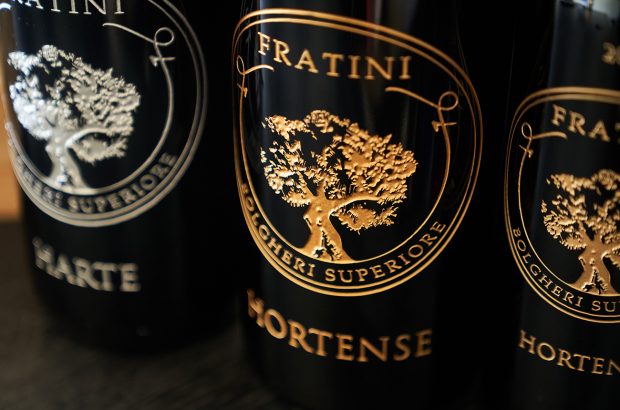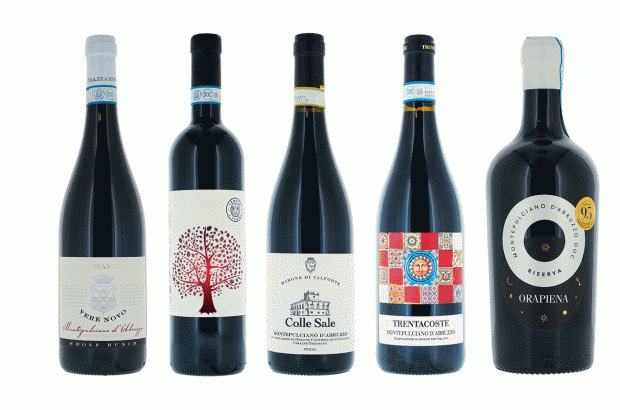What’s that pong? LINDA MURPHY examines the much-maligned,misunderstood but, in some quarters, appreciated, world of Brettanomyces.
In the first year of my wine career, I poured wine at a showing of top bottles from around the world. On a break from the stand, I went around the room to taste many of the other offerings.
When I returned to my table, the winemaker next to me asked, ‘Did anything really impress you?’‘The 1989 Châteauneuf-du-Pape from Château de Beaucastel,’ I answered. He chuckled: ‘You must love Brett.’Although I didn’t know what Brett – Brettanomyces (breh-tan-uh-MYE-sees) – was at the time, I adored the Beaucastel’s earthy, leathery, smoked bacon and spice character, fleshy fruit and firm structure.
I would later learn that Brett, a naturally occurring yeast that is not harmful to consume yet can do both good and bad things to the aromas and flavours of wine,would be a hot topic among winemakers, with no clear winner in the debate.
Vintners call it the ‘B word’ and, at best, Brettanomyces can give wine what many believe to be positive attributes that add complexity and depth: earthy flavours of glove leather, smoked meat, bacon fat, tobacco, truffle, clove and other savoury spices.
Yet when B turns bad, it can give wine the offensive stink of barnyard, manure, plasters, wet dog, sweaty horse blanket, mouse droppings and antiseptic. Fearing the latter, many winemakers around the world do everything they can to prevent Brett contamination.
Others encourage a little bit of it, for that extra ounce of interest, yet have to work hard so that the wild yeast doesn’t overwhelm varietal character and fruitiness. Others, well, let’s just say that if cleanliness is next to godliness, some winemakers aren’t going to church. Those who claim goût de terroir for their unsavoury bottlings are merely making excuses for unsanitary practices.
Friend or foe?
There are multiple strains of – and theories about – Brettanomyces, and a full discussion requires a microbiology thesis. Most simply, there are two wine-altering compounds identified with Brett: 4-ethyl guaiacol (4-eg), which contributes what are thought by many to bacon and spice; and 4-ethyl phenol 4-ep), with its negative plasters, wet dog and medicinal characteristics.
{"content":"PHA+QnJldHQgY2FuIG9jY3VyIG5hdHVyYWxseSBpbiB0aGUgdmluZXlhcmQgYW5kIHdpbmVyeSwgYW5kIHRob3NlIGZhbWlsaWFyIHdpdGggT2xkIFdvcmxkIHJlZHMgZnJvbSBCb3JkZWF1eCwgdGhlIFJow7RuZSBWYWxsZXksIFJpb2phLCBQaWVkbW9udCBhbmQgc29tZSBCdXJndW5keSwgYXBwcmVjaWF0ZSB0aGUgbGVhdGhlcnksIGVhcnRoeSBub3RlcywgdXN1YWxseSBhdHRyaWJ1dGluZyB0aGVtIHRvIHRlcnJvaXIg4oCTIHRoZSBzb2lscywgY2xpbWF0ZSBhbmQgb3RoZXIgZ3Jvd2luZyBjb25kaXRpb25zIG9mIHRoZSB2aW5leWFyZC5CcmV0dCBzaG93cyB1cCBpbiBOZXcgV29ybGQgd2luZXMgdG9vLCBmcm9tIEF1c3RyYWxpYSwgTmV3IFplYWxhbmQsIFdhc2hpbmd0b24gU3RhdGUsIENhbGlmb3JuaWEgYW5kIGVsc2V3aGVyZSwgYW5kIHdpbmVzIGZyb20gU291dGggQWZyaWNhIGhhdmUgYmVlbiB0aHVtcGVkIGluIHRoZSBVSyBwcmVzcyBmb3IgYnVybnQgcnViYmVyIG5vdGVzLCB0aG91Z2h0IGJ5IHNvbWUgdG8gYmUgbGlua2VkIHRvIEJyZXR0LjwvcD4KPHA+QWRhbSBMZWUsIG93bmVyL3dpbmVtYWtlciBvZiBQaW5vdCBOb2lyIHByb2R1Y2VyIFNpZHVyaSBXaW5lcyBpbiBTb25vbWEgQ291bnR5LCBpcyBhIGJhZGdlLXdlYXJpbmcgbWVtYmVyIG9mIHRoZSBCcmV0dCBwb2xpY2UgYW5kIGJlbGlldmVzIHRoYXQgaXQgb2JsaXRlcmF0ZXMgdGVycm9pci4g4oCYQXMgYSBjb25zdW1lciBhbmQgd2luZW1ha2VyLCBJIGFtIG5vdCBhIGZhbiBvZiBCcmV0dCBiZWNhdXNlIGl0IHRha2VzIGF3YXkgZnJvbSB0aGUgd2luZeKAmXMgcmVmbGVjdGlvbiBvZiB0aGUgdGVycm9pcizigJkgaGUgc2F5cy48L3A+CjxkaXYgY2xhc3M9ImFkLWNvbnRhaW5lciBhZC1jb250YWluZXItLW1vYmlsZSI+PGRpdiBpZD0icG9zdC1pbmxpbmUtNCIgY2xhc3M9ImlwYy1hZHZlcnQiPjwvZGl2PjwvZGl2Pgo8cD5QaW5vdCBOb2lyIHByb2R1Y2VyIFNpZHVyaSBXaW5lcyBpbiDigJhCcmV0dCBmcm9tIHRoZSBSaMO0bmUgVmFsbGV5IHRhc3RlcyBlc3NlbnRpYWxseSB0aGUgc2FtZSBhcyBCcmV0dCBmcm9tIEJhcm9zc2EgYW5kIEJyZXR0IGZyb20gUGFzbyBSb2JsZXMuIE9uZSBvZiBteSBtYWluIHJlYXNvbnMgZm9yIGRyaW5raW5nIHdpbmUgaXMgdG8gdGFzdGUgdGhhdCByZWZsZWN0aW9uIG9mIHBsYWNlLCBhbmQgSeKAmW0gdHJlbWVuZG91c2x5IGRpc2FwcG9pbnRlZCB3aGVuIHRoaXMgaXMgY29tcHJvbWlzZWQgYnkgQnJldHQuIFdlIGRvIGV2ZXJ5dGhpbmcgd2UgY2FuIHRvIGF2b2lkIGhhdmluZyBCcmV0dCBpbiBvdXIgZmFjaWxpdHkgYW5kIGluIG91ciB3aW5lcywgYW5kIHRodXMgZmFyIHdlIGhhdmUgYmVlbiB2ZXJ5IGZvcnR1bmF0ZS4gSeKAmW0ganVzdCBub3QgYSBmYW4gb2YgQnJldHQsIHdoZXRoZXIgaXTigJlzIGEgbG90IG9yIGEgbGl0dGxlLiBJdOKAmXMgbGlrZSBzb21lb25lIHNheWluZyB0aGV54oCZcmUgYSBsaXR0bGUgYml0IHByZWduYW50LuKAmTwvcD4KPGgyPlNlbnNpdGl2ZSBzdWJqZWN0PC9oMj4KPHA+QnJldHQgc2hvd3MgaXRzZWxmIGFmdGVyIHRoZSBmZXJtZW50YXRpb24gb2YgcmVkIHdpbmUgd2hlbiBpdOKAmXMgYWdlaW5nIGluIGJhcnJlbC4gSXQgbG92ZXMgdmVyeSByaXBlIGdyYXBlcywgcmVzaWR1YWwgc3VnYXIsIHdhcm0gZmVybWVudGF0aW9ucywgaGlnaCBhbGNvaG9sIGxldmVscywgaGlnaCBwSCBhbmQgbG93IGFjaWRpdHkuIEl04oCZcyB1bnVzdWFsIHRvIGZpbmQgQnJldHQgaW4gd2hpdGVzIGJlY2F1c2Ugb2YgdGhlaXIgaGlnaGVyIGFjaWRpdGllcyBhbmQgbG93ZXIgcEggbGV2ZWxzLjwvcD4KPGRpdiBjbGFzcz0iYWQtY29udGFpbmVyIGFkLWNvbnRhaW5lci0tbW9iaWxlIj48ZGl2IGlkPSJwb3N0LWlubGluZS01IiBjbGFzcz0iaXBjLWFkdmVydCI+PC9kaXY+PC9kaXY+CjxwPkZvciByZWRzIG1hZGUgaW4gdGhpcyBmYXNoaW9uYWJsZSwgYW5kIG9wdWxlbnQgc3R5bGUsIGZpbHRyYXRpb24gY2FuIHJlbW92ZSBCcmV0dCwgeWV0IG5vbi1pbnRlcnZlbnRpb25pc3Qgd2luZW1ha2VycyBhYmhvciBmaWx0ZXJpbmcsIGZvciBpdCBhbHNvIHJlbW92ZXMgbWFueWdvb2QgdGhpbmdzIGluIHdpbmUsIG1ha2luZyBpdCBsZXNzIG5hdHVyYWwuPC9wPgo8cD5UaGV5IGFsc28gc2h1biBhbnkgYWRkaXRpb25zIG9mIHRoZSBwcmVzZXJ2YXRpdmUgc3VscGh1ciBkaW94aWRlIChTTzIpIHdoaWNoIGNhbiBhbHNvIGtub2NrIGRvd24gdGhpcyBwZXJzaXN0ZW50IHllYXN0LiBZZXQgQnJldHQgaXMgZXZlcnl3aGVyZSwgZXZlbiBpbiBjbGVhbiB3aW5lcmllcy4gSXTigJlzIGluIHRoZSB2aW5leWFyZCBhbmQgb24gdGhlIGdyYXBlcy48L3A+CjxwPkl0IGNhbiBiZSBpbiBvYWsgYmFycmVscyBhbmQgZm91ZHJlcywgYm90aCBvbGQgYW5kIG5ldyAoaXQgZmVhc3RzIG9uIHRoZSBzdWdhciBpbiB0aGUgd29vZCksIGhvc2VzLCBwdW1wcywgdGhlIGJvdHRsaW5nIGxpbmUgYW5kIG9uIHRoZSBzb2xlcyBvZiB3b3JrZXJz4oCZIHNob2VzLiBGZXJtZW50YXRpb25zIHVzaW5nIG5hdGl2ZSB5ZWFzdHMgYXJlIHNhaWQgdG8gZW5jb3VyYWdlIEJyZXR0IGdyb3d0aCwgYW5kIGFuIGluZmVjdGlvbiBpbiBvbmUgYmFycmVsIGNhbiBzcHJlYWQgdGhyb3VnaCBjcm9zcy1jb250YW1pbmF0aW9uLjwvcD4KPHA+QnJldHQgY2FuIHJlYXIgaXRzc29tZXRpbWVzLXVnbHkgaGVhZCBpbiBvbmUgdmludGFnZSwgYW5kIGJlIHRhbWUgYXMgYSBidW5ueSB0aGUgbmV4dC4gSXQgY2FuIGFsc28gYmUgYSB0aWNraW5nIHRpbWUgYm9tYiwgdGhlIGNvbXBvdW5kcyBtdWx0aXBseWluZyBpbiB0aGUgY2VsbGFyIGFuZCBpbiB0aGUgYm90dGxlIGlmIHRoZSBpbmZlY3RlZCB3aW5lIGlzIG5vdCBmaWx0ZXJlZCwgZG9zZWQgd2l0aCBTTzIgb3IgdHJlYXRlZCB3aXRoIGRpbWV0aHlsIGRpY2FyYm9uYXRlIChETURDKSwgc29sZCB1bmRlciB0aGUgdHJhZGUgbmFtZSBWZWxjb3Jpbiwgd2hpY2ggaXMgbGVnYWwg4oCTIGJ1dCBjb3N0bHkg4oCTIGluIHRoZSBVUywgeWV0IG5vdCB0YWxrZWQgYWJvdXQgb3V0c2lkZSB3aW5lbWFraW5nIGNpcmNsZXMuIFZlbGNvcmluIGlzIGEgY29udHJvdmVyc2lhbCBzdWJqZWN0LCBhbHNvIHJpcGUgZm9yIGEgZGVlcCBzY2llbnRpZmljIGRpc2N1c3Npb24uPC9wPgo8cD5Cb3JkZWF1eCBjb25zdWx0YW50IERlbmlzIER1Ym91cmRpZXUgc2F5cyBCcmV0dCBpcyBhIGZhdWx0LCBidXQgYWxzbyBwYXJ0IG9mIHRoZSBmYWJyaWMgb2YgQm9yZGVhdXguIOKAmFdpdGhvdXQgYSBkb3VidCwgQnJldHQgaXMgc2VlbiBhcyBhIGZsYXcgYnkgQm9yZGVhdXggd2luZW1ha2VycyzigJkgaGUgc2F5cy4g4oCYSXQgaXMgYSBtYXR0ZXIgb2YgZ3JlYXQgY29uY2VybiB0byB1cywgYXMgd2UgcGljayByaXBlciBiZXJyaWVzIHRoYW4gZXZlci48L3A+CjxwPldlIGhhdmUgdG8gYWdlIHdpbmVzIHdpdGggbG93ZXIgYWNpZGl0eSBtb3JlIGNhcmVmdWxseSB0byBrZWVwIHRoZSBnZW51aW5lIGZydWl0IGNvbXBsZXhpdHkuIEFsbCB0aGUgY2xhc3NpZmllZCBncm93dGhzIHdvcmsgd2l0aCBzZWxlY3RlZCB5ZWFzdHMgaW4gdGhlIGFsY29ob2xpYyBhbmQgbWFsb2xhY3RpYyBmZXJtZW50YXRpb25zIGFuZCBzdWxwaHVyIHRoZWlyIHdpbmVzIGJldHRlciDigJMgZXNwZWNpYWxseSBiZWZvcmUgc3VtbWVyLiBPciB0aGV5IGhhdmUgYSBzdGVhbSBtYWNoaW5lIHRvIGNsZWFuIHRoZSBiYXJyZWxzLjwvcD4KPHA+QnV0IHRvIGRlZmluaXRpdmVseSBoYXZlIGEgQm9yZGVhdXggd2l0aG91dCBCcmV0dCwgd2XigJlkIGhhdmUgdG8gcmFkaWNhbGx5IGNoYW5nZSBob3cgQm9yZGVhdXggaXMgbWFkZS7igJkgQ29tcG91bmRpbmcgdGhpcyBjaGFsbGVuZ2UgaXMgdGhhdCBzb21lIHBlb3BsZSBhcmUgbmVnYXRpdmVseSBzZW5zaXRpdmUgdG8gQnJldHQsIHdoaWxlIG90aGVycyBmaW5kIGl0IGludml0aW5nLjwvcD4KPHA+TXkgdGhyZXNob2xkIGlzIGZhciBtb3JlIHRvbGVyYW50IHRoYW4gdGhhdCBvZiBMZWVzLCBhbmQgSeKAmWQgaGF0ZSB0byBtaXNzIG91dCBvbiBzb21lIGdyZWF0IHdpbmVzIGJlY2F1c2UgdGhleSBoYXZlIGEgdG91Y2ggb2ZlYXJ0aHkgQnJldHQuIFBldGVyIEdhZ28sIGNoaWVmIHdpbmVtYWtlciBmb3IgUGVuZm9sZHMgaW4gQXVzdHJhbGlhLCB0ZWxscyBvZiB0aGUgaXNzdWVzIHdpbmVtYWtlcnMgZmFjZSBpbiBkZWFsaW5nIHdpdGggQnJldHQ6IOKAmFdlIGNvbnNpZGVyIHRoYXQgaWYgaXQgaXMgZGV0ZWN0YWJsZSwgdGhlbiBpdOKAmXMgYSBmbGF3LjwvcD4KPHA+V2l0aG91dCB3YW50aW5nIHRvIGdldCBpbnRvIGRldGVjdGlvbi9yZWNvZ25pdGlvbiB0aHJlc2hvbGRzLCB3ZSB0aGluayB0aGF0IHRoZSBhcmd1bWVudCB0aGF0IEJyZXR0IGFkZHMgYSB0b3VjaCBvZiBjb21wbGV4aXR5IGhhcyBiZWVuIGhpc3RvcmljYWxseSBvdmVycGxheWVkIGFuZCBtaXNsZWFkaW5nLiDigJhBcyBCcmV0dCBpcyBub3Qgb25seSBwcm9kdWNlZCBpbiB0aGUgdmluZXlhcmQgcmVsYXRlZF0uPC9wPgo8cD5QZW5mb2xkcyBoYXMgcHV0IG1hbnkgcHJvY2VkdXJlcyBpbiBwbGFjZSB0byBjb250cm9sIGl0LCByZW1lbWJlcmluZyB0aGF0IGp1c3QgYWJvdXQgYWxsIHdpbmVzIGNvbnRhaW4gdHJhY2UgYW1vdW50cyBvZiB0aGlzIHllYXN0LiBTTzIgY2FuIGJlIGFkZGVkIHRvIGdyYXBlcyBwcmlvciB0byBjcnVzaGluZzsgdXNlZCBkdXJpbmcgbWF0dXJhdGlvbiBhbmQgdG8gYm90dGxlO2FuZCB0YW5rcyBhbmQgZXF1aXBtZW50IGFyZSB0aG9yb3VnaGx5IHNhbml0aXNlZCBvbiBhIHJlZ3VsYXIgYmFzaXMuPC9wPgo8cD5OZXcgYW5kIG9sZCBvYWsgYmFycmVscyBhcmUgYm90aCBndWlsdHkgbGFuZGxvcmRzLuKAmSBCcmV0dCBpcyBub3QgYXMgcHJvbWluZW50IGluIEJvcmRlYXV4IHRoZXNlIGRheXMsIHRoYW5rcyBpbiBsYXJnZSBwYXJ0IHRvIHRoZSB3b3JrIG9mIHJlc2VhcmNoZXIgUGFzY2FsIENoYXRvbm5ldC4gSW4gdGhhdCBvbmUtdGhpcmQgaGFkIGxldmVscyBvZiBCcmV0dCBhYm92ZSB0aGUgcGVyY2VwdGlvbiB0aHJlc2hvbGQsIGFuZCBsYWNrZWQgZnVsbCBmcnVpdCBjaGFyYWN0ZXIgYW5kIHR5cGljaXR5LiBXaW5lbWFrZXJzIGhhdmUgc2luY2UgY2xlYW5lZCB1cCB0aGVpciBjb2xsZWN0aXZlIGFjdHMsIHNvIHRvIHNwZWFrLCB5ZXQgYSBsaXR0bGUgYml0IG9mIEZyZW5jaCB3aW5lLjwvcD4KPGgyPkRvbuKAmXQgYXNrLCBkb27igJl0IHRlbGw8L2gyPgo8cD5SYXJlbHkgd2lsbCBhIHdpbmVtYWtlciAocGFydGljdWxhcmx5IGluIHRoZSBVUykgY29uZmVzcyB0byBoYXZpbmcgQnJldHQgaW4gdGhlaXIgd2luZXMsIGV2ZW4gd2hlbiBpdCBhcHBlYXJzIHRvIGJlIHByZXNlbnQuIFdoaWxlIHZpbnRuZXJzIG1pZ2h0IHBlcnNvbmFsbHkgYXBwcmVjaWF0ZSBhIGxlYXRoZXJ5IGNoYXJhY3RlciBpbiB0aGVpciByZWRzLCB0aGUgQnJldHQgUG9saWNlIOKAkyB3aW5lbWFraW5nIHBlZXJzIGFuZCBjZXJ0YWluIGNyaXRpY3Mg4oCTIHdpbGwgY29uZGVtbiB0aGVtIGZvciB3aGF0IHRoZXkgY29uc2lkZXIgdG8gYmUgZXZpZGVuY2Ugb2Ygd2luZW1ha2luZyBmYXVsdC48L3A+CjxwPkl04oCZcyBhIHNpdHVhdGlvbiByZW1pbmlzY2VudCBvZiB0aGUgVVMgbWlsaXRhcnnigJlzIOKAmGRvbuKAmXQgYXNrLCBkb27igJl0IHRlbGzigJkgcG9zaXRpb24gb24gaG9tb3NleHVhbGl0eTtkb27igJl0IGFzayBtZSBhYm91dCBCcmV0dCwgYW5kIEkgd29u4oCZdCBoYXZlIHRvIHRlbGwgeW91IHRoYXQgaXTigJlzIGluIG15IHdpbmUuPC9wPgo8cD5BcyB3ZWxsLCB3aW5lIHJldmlld2VycyBjYW7igJl0IGRlY2xhcmUgZm9yIHN1cmUgdGhhdCBhIHdpbmUgaGFzIEJyZXR0IHdpdGhvdXQgbGFib3JhdG9yeSBhbmFseXNpcyB0byBiYWNrIGl0IHVwIChoZW5jZSB0aGUgbGFjayBvZiBhIOKAmEhlcmXigJlzIHNvbWUgd2luZXMgd2l0aCBCcmV0dOKAmSBwYW5lbCBpbiB0aGlzIHBpZWNlKS48L3A+CjxwPkFuIGVhcnRoeSB3aW5lIGNhbiBiZSBtZXJlbHkgZWFydGh5LCBpbmRpY2F0aXZlIG9mIHRoZSB2YXJpZXRhbCBhbmQgdGVycm9pcjsgdGhlIHRhc3RlciBuZXh0IHRvIG1lIG1pZ2h0IGRlY2xhcmUgdGhlIHdpbmUgY29tcHJvbWlzZWQgYnkgQnJldHQsIHlldCBvbmx5IGEgbGFiIGNvdWxkIHByb3ZlIHRoZW0gY29ycmVjdC4gTWF0dCBUaG9tc29uLCB3aW5lbWFrZXIgZm9yIFNhaW50IENsYWlyIFdpbmVyeSBpbiBNYXJsYm9yb3VnaCwgTmV3IFplYWxhbmQsIGFuZCBhbiBpbnRlcm5hdGlvbmFsIGNvbnN1bHRhbnQsIGJlbGlldmVzIHRoYXQgaW4gYWRkaXRpb24gdG8gdWx0cmFyaXBlIGdyYXBlcyBhbmQgdGhlIHByZXNlbmNlIG9mIHJlc2lkdWFsIHN1Z2FyIGFmdGVyIGZlcm1lbnRhdGlvbiwgbmV3IG9hayBiYXJyZWxzIG1heSBiZSByZXNwb25zaWJsZSBmb3Igc29tZSBCcmV0dC48L3A+CjxwPkhlIHNwZWN1bGF0ZXMgdGhhdCBoYXJ2ZXN0aW5nIG9mIHdvb2QgZnJvbSBpbmZlY3RlZCBzb3VyY2VzIG1heSBiZSBhIHNvdXJjZS4gT25lIHRoaW5nIFRob21zb24ga25vd3MgZm9yIHN1cmUgaXMgdGhhdCBCcmV0dCBoYXMgbm8gcGxhY2UgaW4gUGlub3QgTm9pci4g4oCYSSBsaWtlIGEgbG93IGxldmVsIG9mIEJyZXR0IGluIHdpbmVzIHRoYXQgY2FuIHRha2UgaXQsIGJ1dCBub3QgaW4gUGlub3Qs4oCZIGhlIHNheXMuPC9wPgo8cD7igJhJIHJldGFzdGUgUGlub3QgTm9pciBiYXJyZWxzIGF0IHZhcmlvdXMgc3RhZ2VzIHRvIG1ha2Ugc3VyZSB0aGVyZSBpcyBubyBCcmV0dCBjb250YW1pbmF0aW9uLiBCcmV0dGNhdXNlcyBhIGxvc3Mgb2YgZnJ1aXQsIGFuZCBpdOKAmXMgc3VjaCBhIGRpc3RyYWN0aW9uIGluIFBpbm90IE5vaXIgdGhhdCBpdCBlcm9kZXMgdGhlIHZhcmlldGFsIGNoYXJhY3Rlci48L3A+CjxwPiYjODIxNjtTb21lIHdpbmVzIGRlYWwgd2l0aCBpdCBiZXR0ZXIg4oCTIHJlZCBCb3JkZWF1eCBmb3IgZXhhbXBsZSwgd2hlcmUgaXQgY2FuIGhhdmUgYSBwb3NpdGl2ZSByb2xlLiBDaGlhbnRpIGNhbiBiZSBmdWxsIG9mIGl0IGFuZCBpdCBzZWVtcyB0byB3b3JrIG9rYXkgd2l0aCBTYW5naW92ZXNlLiBZZXQgQnJldHQgY2FuIG11bHRpcGx5IGluIGJvdHRsZSBpZiB0aGUgd2luZSBpcyB1bmZpbHRlcmVkIGFuZCwgYXMgaXQgYWdlcywgdGhlcmUgaXMgYSBnb29kIGNoYW5jZSBpdCB3aWxsIGJsb29tLCBldmVuIGlmIGp1c3Qgb25lIGJhcnJlbCB3aXRoIEJyZXR0IHdhcyB1c2VkIGZvciB0aGUgbG90LjwvcD4KPHA+TW9zdCBwZW9wbGUgYXJlIHdvcmtpbmcgb24gd2F5cyB0byBkZWFsIHdpdGggQnJldHQsIGV2ZW4gaWYgd2UgZG8gbGlrZSBhIGJpdCBvZiBpdCBpbiBvdXIgQ2FiZXJuZXQgU2F1dmlnbm9uLuKAmSBQZXJoYXBzIEplYW4tRnJhbsOnb2lzIFBlbGxldHQsIHRoZSBTd2lzcy1ib3JuIHdpbmVtYWtlciBhdCBQZXBwZXIgQnJpZGdlIGluIFdhbGxhIFdhbGxhLCBXYXNoaW5ndG9uLCBzcGVha3MgZm9yIG1vc3Qgd2luZW1ha2VycyB3aGVuIGhlIHNheXMsIOKAmEJyZXR0IGlzIHNvbWV0aGluZyBJIGRvbuKAmXQgbWluZCBpbiBvdGhlciBwZW9wbGXigJlzIHdpbmUsIEkganVzdCBkb27igJl0IHdhbnQgaXQgaW4gbXkgb3duLuKAmTwvcD4KPGRpdiBjbGFzcz0iaW5qZWN0aW9uIj48L2Rpdj4KPHA+TGlrZSBqdXN0IGFib3V0IGV2ZXJ5dGhpbmcgZWxzZSB3aXRoIHdpbmUsIHdoZXRoZXIgQnJldHQgaXMgcG9zaXRpdmUgb3IgbmVnYXRpdmUgaXMgdXAgdG8gaW5kaXZpZHVhbCB0YXN0ZS4gVGhlcmUgaXMgbm8gd2F5IHRvIHRlbGwgd2hldGhlciBhbiB1bm9wZW5lZCBib3R0bGUgd2lsbCBoYXZlIEJyZXR0LCBvciB3aGV0aGVyIHlvdeKAmWxsIGRldGVjdCBpdCBhbmQgbGlrZSBpdCDigJMgb3Igbm90LiBZZXQgdGhhdOKAmXMgdGhlIG5hdHVyZSBvZiB3aW5lIGFuZCwgd2hvIGtub3dzLCBzb21lIGRheSB0aGUgYmFjayBsYWJlbHMgbWF5IGluZm9ybSBidXllcnMgdGhhdCwg4oCYdGhpcyB3aW5lIGhhcyBhIGdlbnRsZSBraXNzIG9mIHN3ZWF0eSBzYWRkbGUgYW5kIGEgdG91Y2ggb2YgQnJldHR5IGVhcnRoaW5lc3PigJkuPC9wPgo8cD4K"}















